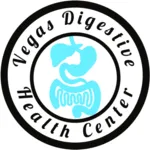What is diverticulosis?
Diverticulosis refers to a condition when small, bulging pockets or pouches called diverticula form on the inner wall of the intestine. Most Americans over the age of 60 have diverticulosis.
What causes diverticulosis?
No one knows exactly why diverticulosis develops, but a common theory is that a low-fiber diet leads to constipation and straining which over time increases pressure within the digestive tract causing the diverticula to form at the weak spots in the colon wall.
What are the symptoms of diverticulosis?
Most people with diverticulosis have no symptoms at all, however, when symptoms occur, they may include abdominal pain, cramping, bloating, constipation, diarrhea and changes in appetite. Occasionally, the diverticula may get infected or inflamed causing a “diverticulitis”. Rarely, a small percentage of patients may also develop diverticular bleeding.
How is diverticulosis diagnosed?
Diverticulosis is usually found incidentally through direct visualization during a colonoscopy. Imaging studies such as CT (computed tomography) scans or barium x-rays can also detect diverticulosis.
What is the treatment for diverticulosis?
No treatment is necessary for patients with diverticulosis that do not have symptoms. It is recommended, however, to increase your dietary consumption of fruits, vegetables, fiber and fluid intake. Your doctor may also prescribe a fiber supplement to you to avoid constipation and you may need antibiotics if you develop diverticulitis.

